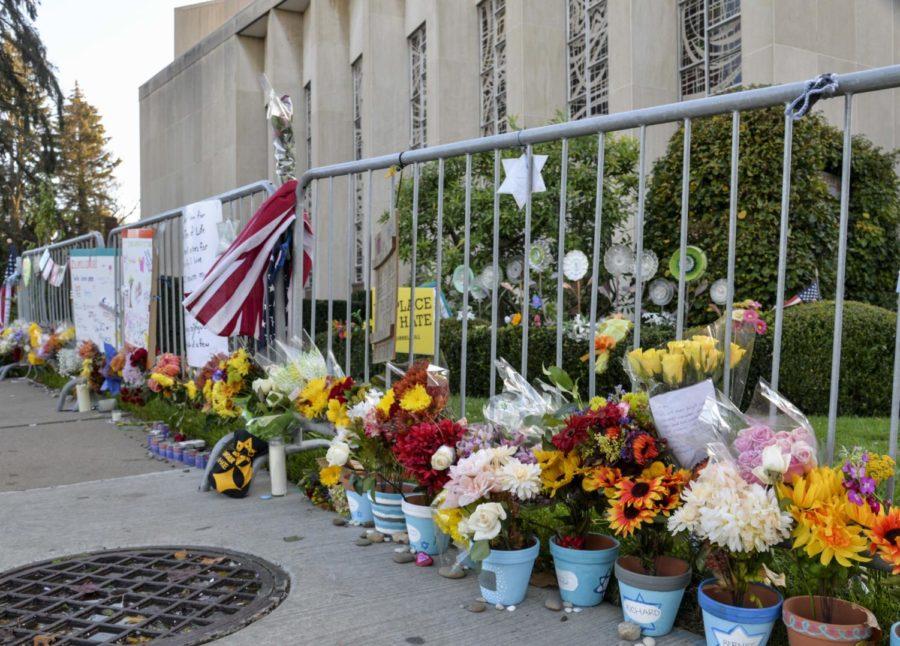Editorial | We still need to remember the Tree of Life massacre
Flowers, candles and chalk drawings placed outside the Tree of Life Synagogue in 2019.
October 27, 2021
National tragedies shift from current events to history at some undefined point. Perhaps it’s when they stop making daily headlines, or when they fade from everyday conversation. Maybe it’s when those most directly affected are finally able to go about their daily lives without the tragedy dominating their thoughts, if this is even possible.
Regardless, this transition is a natural process, and must be treated carefully. It can allow for healing, reflection, dignified remembrance of victims and prevention of future tragedies. But if not given the proper attention, these events can fade from our collective memory and become nothing more than history, destined to be repeated.
We cannot allow the Tree of Life massacre, carried out three years ago today, to become the latter.
This shooting was an act of antisemitism and white nationalist hatred, taking the lives of 11 Jewish congregants and injuring six more — the deadliest attack ever against the Jewish community in the United States. The Tree of Life building, where the massacre took place, is located in Pittsburgh’s Squirrel Hill neighborhood, less than two miles from Oakland. This was a national tragedy, but the proximity makes it all the more painful for Pittsburghers, and all the more important that we work to prevent future antisemitic attacks.
Even worse, this violence was not an isolated event — it was part of a disturbing trend. According to the Anti-Defamation League, a Jewish nonprofit which focuses on identifying and combatting extremism, there’s been a general rise in antisemitic incidents across the U.S. since 2013 — “incidents” meaning reported harassment, vandalism or assault. Notably, Pennsylvania accounted for 101 of these incidents in 2020, the fifth-highest of any state.
ADL data shows that 2021 is on pace to be much better, but 533 incidents nationally is still 533 too many. This number includes the May surge in hate crimes that correlated with an outbreak of violence between Israel and Hamas. Three years out from the Tree of Life massacre, there’s still much work to be done in preventing antisemitism.
This can be done through the marginalization of antisemitic voices at every turn and reporting incidents to organizations like the ADL and local law enforcement. Zero tolerance is paramount in combatting antisemitic beliefs. Education through college and beyond is also a crucial element of rooting out antisemitism. Part of transitioning into adulthood is understanding the ugly parts of history and reckoning with their impacts.
These are tools of prevention, but remembrance is the path to it. Eleven people were killed, six were wounded and countless others felt a new, or renewed fear for their safety because of their religion.
Nearly 3,000 people gathered on the Cathedral of Learning’s lawn about a week and a half after the massacre to mourn the victims. It’s unlikely that we’ll see commemorative events of the same scale in the future, and to some extent, that’s to be expected. But as the Tree of Life massacre continues its transition from present to past, we can’t allow it to be forgotten.








